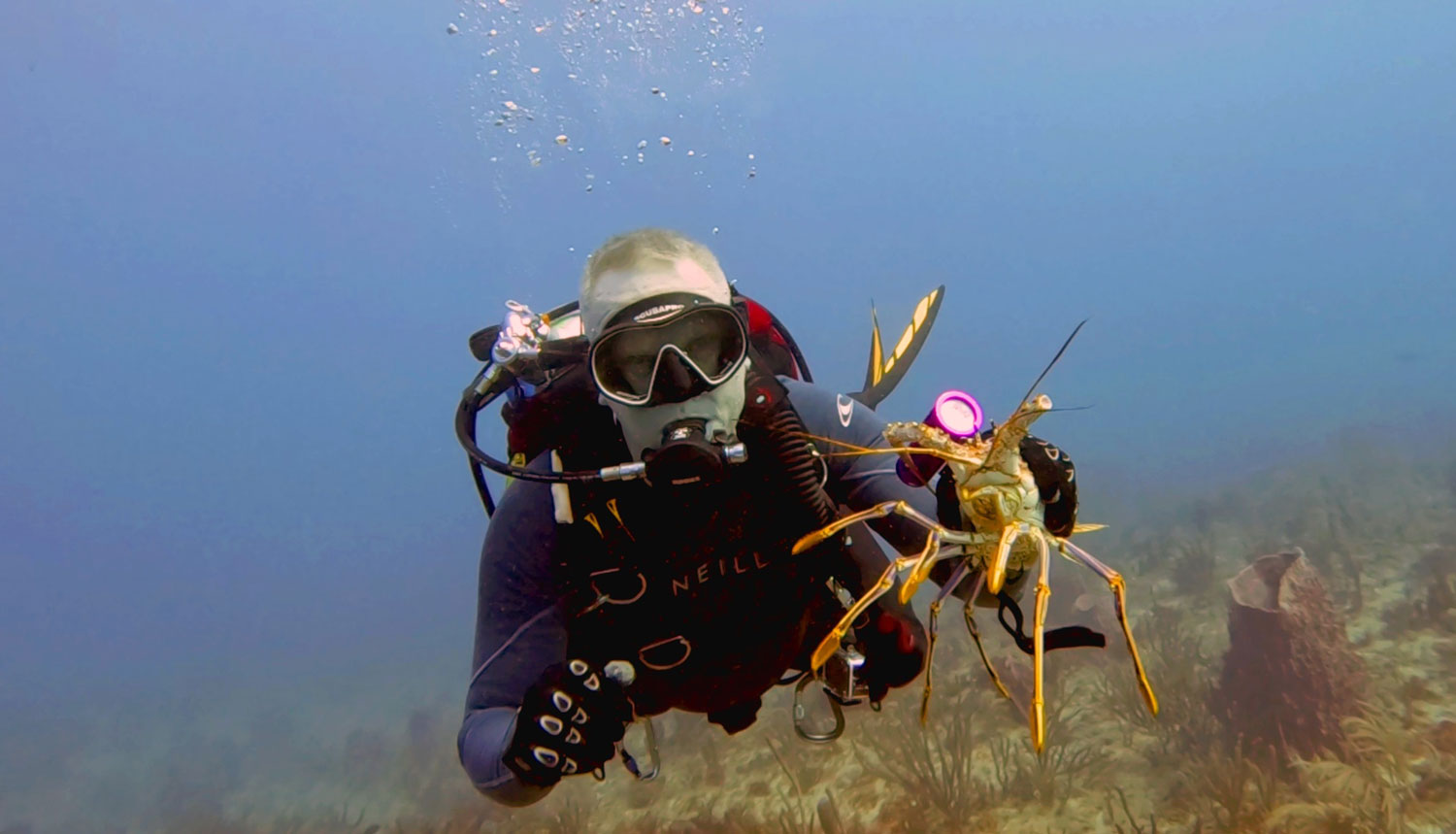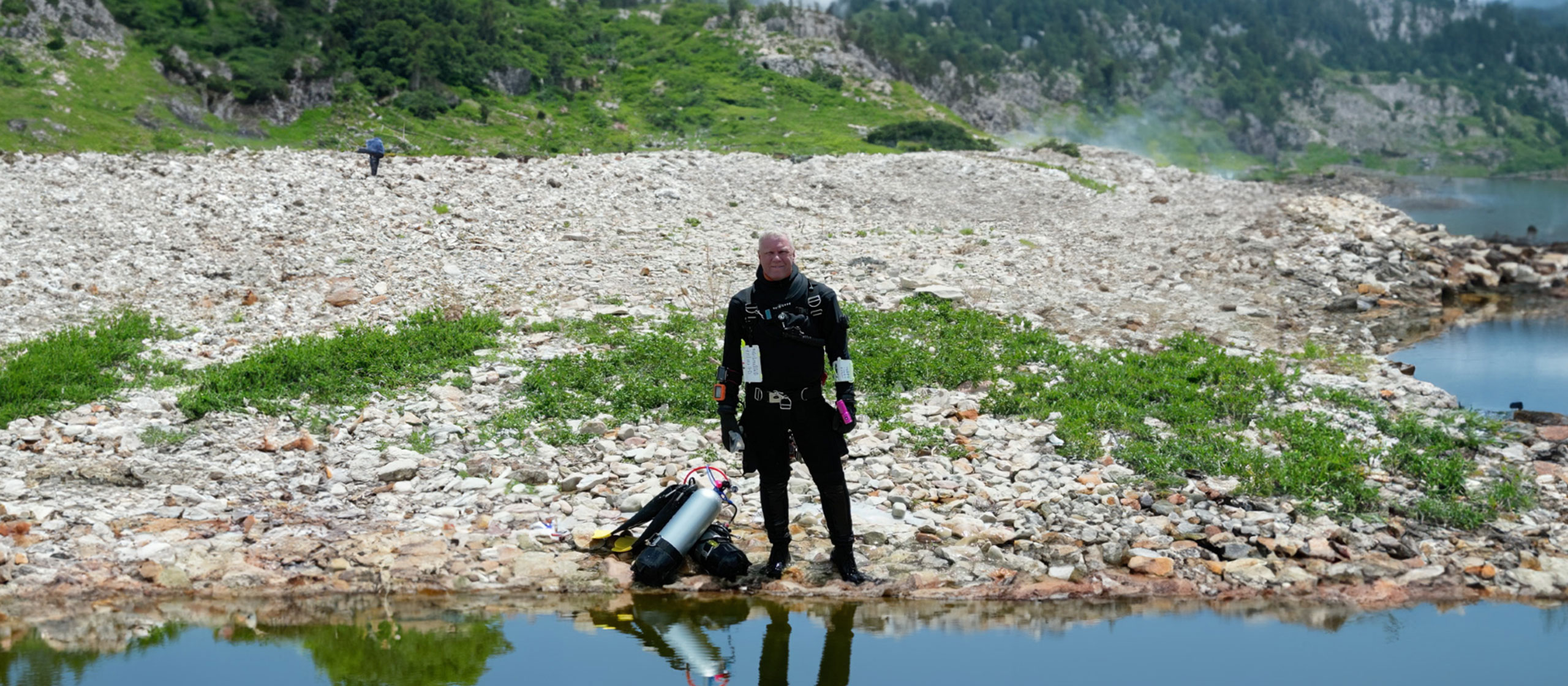Understanding Gas Density: Should it matter to you? Crucial Aspects in Scuba Diving.
For many recreational divers, the allure of exploring underwater worlds often overshadows the technicalities involved and the potential hazards that await them. Not realizing that “The water WILL hold you accountable for your decisions, thus making well-informed choices is critical, especially when increasing your depth past the initial 20-meter mark of your initial Open Water training. As you plunge into the deep, one aspect that you should pay close attention to, whether you are a novice diver or a seasoned professional, is the concept of gas density and its profound impact on your diving experiences.
At its core, gas density refers to the mass of gas per unit volume. In simpler terms, it determines how ‘thick’ the air you breathe feels at varying depths, and is sometimes thought of as the gas’s weight, and while it isn’t an expression of weight it does tend to simplify the image of the gas you are breathing. As you the diver, descend deeper, the density of the gas you breathe increases, creating additional challenges for your respiratory systems.
Why does gas density matter? The answer lies in the body’s ability to cope with the increased workload imposed on the respiratory muscles underwater, this is measured by the “Work of Breathing” or WoB.
WoB is an integral of pressure as a function of volume that’s used to measure the effort required to breathe. A high WoB means it takes more effort (measured in energy) to draw breath (a measure of volume). High WoB results in increased CO2 production, and that CO2 increase can result in hypercapnia, narcosis, and Immersion Pulmonary Odema (IPO), with symptoms including loss of consciousness, brain fog, confusion, anxiety, shortness of breath, headaches, disorientation, confusion, paranoia, difficulty in breathing, and seizures, among other symptoms.
While we typically can’t discern the difference in breathing during a dive, gas density and the accompanying increase in WoB are there and working against us all the time.
Similar to how our muscles have limits, our lungs and diaphragm can only handle so much ‘work of breathing’ before encountering fatigue or stress. Imagine breathing through a constricted straw – that’s akin to what happens as gas density rises underwater.

This increase in workload becomes more prevalent with depth. At shallower depths, the gas is less dense, allowing for relatively easy breathing. However, as divers descend to greater depths, the density of the gas they breathe rises significantly, making each breath a more strenuous task, whether they realize it or not. Even with the best regulator, the gas density is a factor for every diver. The better the regulator, the longer this issue can be held off, but there is only so far that a mechanical solution can stave off the laws of physics.
Consider a scenario where a diver ventures to depths beyond 20 meters without considering the density of the gas they’re breathing. The physical strain on their respiratory system intensifies, leading to a reduced ability to eliminate carbon dioxide (CO2) from their bloodstream. Elevated CO2 levels can trigger a cascade of undesirable effects, from breathlessness to impaired cognitive function, and in severe cases, loss of consciousness.
Recent research has shed light on the critical thresholds of gas density that divers should be mindful of. Gas density levels beyond certain limits significantly increase the risk of CO2 retention, leading to problems at an alarming rate.
To measure this, researchers at Wrigley Marine Science Center, Catalina Island, CA determined that “Increases in gas density result in a parallel increase in the resistance to the flow of the gas through the diver’s airways… further in dry chamber experiments it was shown that the maximum amount of air a subject can move in and out of their lungs in one minute is approximately 50% (compared to the surface) at 100 ft (30 m/4.0 ATA) (Camporesi and Bosco 2003).
Working with both open-circuit and rebreather divers, Gavin Anthony, an underwater breathing apparatus engineer from the UK, and Professor Simon Mitchell found that a gas density near the 6 g/l mark significantly increased the risk of dangerous CO2 retention during dives, resulting in their test subjects failing more than half their attempted dives and experiencing issues at more than three times the rate of divers using gas that was 1 g/L less dense.

Let’s break this into more usable terms though, starting with the weight of gas.
First, it is important to know that at the surface, the air we breathe has a density of 1.29 grams per liter. This is broken down into 21% Oxygen (1.428 g/L) and 79% Nitrogen (1.251 g/L), as we descend in the water column, the density of the gas we are breathing is increased by the surrounding pressure of the water. This means that at 10 MSW or 2 ATA, the density of the gas we are breathing has increased to 2.6 g/L, (which is still, a very safe density for the diver).
The conclusion from this research was an ideal maximum gas density of 5.2 g/L (equivalent to air at 100 fsw/30.4 msw) and a hard maximum of 6.2 g/L (equivalent to air at 125 fsw/38.1 msw) should be applied to all dive to increase the diver’s safety dramatically.
Now, what does this mean for recreational divers? It’s essential to plan dives and consider the gas density at various depths. Training programs, dive shops, and dive operators should emphasize the importance of staying within safe gas density limits to mitigate potential risks that are associated with CO2 retention and high WoB at deeper depths due to the high density of gas.
Unfortunately, this information isn’t currently widely recognized, available, or being taught in most agency’s open water or deep diver programs. This information about the dangers of high gas density isn’t generally provided until most divers move into the higher technical ranges with the use of Helium or CCR where this information is covered.
While most agencies are aware of this information and the research and understanding are beginning to trickle down, they are still slow to integrate this information into their programs in any meaningful way.
Scenario to consider…
FACT – 2022 Divers Alert Network Noted that 58% of dive maladies were cardiac-related
Story (fictional but common reality)
Barbara, a 58-year-old female was certified in 1998 through a local dive center and over the next 23 years, dove off and on while on vacation and was able to log just over 100 dives during this time.
Barbara was a mid-level manager in an office and, while not unhealthy, was considered to be slightly overweight and had a low level of physical fitness and activity.
In 2022 Barbara decided to engage with a local dive center in her area to participate in a diving trip with this shop and would be spending 6 days in Central America at an all-inclusive diving resort.
Not wanting to miss any diving opportunities, the local dive center quickly convinced her to take Nitrox, Deep Diving, and Night Diving courses in the week before their departure. During the holiday, the guests were treated to 3 dives a day at various depths.
On Day 3, Barbara and the dive shop owner decided to do a shore dive together that would include a 150-meter surface swim and a dive using EAN 28 to a depth of 40 meters, with the EAN 28, the bottom time of the dive would be limited to 12 minutes. While on the dive, at the 8-minute mark, Barbara seemed to be having some issues with her breathing and began to convulse and then pass out.
The instructor/owner of the shop who was also her dive buddy, recognized the issue reasonably quickly and swam to Barbara. Once he assessed that she was unconscious and potentially not breathing, he began an ascent to the surface.

Upon arriving at the surface, he quickly assessed that Barabara was not breathing and attempted rescue breaths first, then towed Barbara 150 meters to the shore. Once at the shore, EMS was called and CPR was begun. Unfortunately for Barbara, it was too late. She had gone into Cardiac arrest during the dive and was not able to be revived!
This fictional story is, unfortunately, all too common. But, could it have been avoided?
While it is difficult to pinpoint the actual cause of this fatality, it is reasonable to connect the high cardiac work caused by an increase in CO2 retention and a very high WoB due to a gas density of 6.5 g/L or 1.3 g/L over the recommended maximum limit of gas density!
While this incident could have also been attributed potentially to IPO, Barbara didn’t present with any of the common pre-existing conditions that typically indicate a risk for this.
Her heart was determined to have been unable to handle the exertion of the dive.
The second challenge with this situation was the need for more data collected or revealed during the postmortem investigation.

Gareth Lock, of the Human Diver organization discusses this in his book “Under Pressure” and expresses that “One of the greatest challenges we face in truly understanding diver fatalities is the uncovering of
- What was done
- What was supposed to be done and
- What should have been disclosed?
We live in a very litigious society, and divers involved in accidents tend to be very careful about how much information they will reveal in fear of the legal consequences and ramifications.
Is there a way to potentially reduce accidents like this?
We have all been taught over the years that the golden rule of diving is:
- NEVER dive beyond your training.
- Never dive beyond your ability.
- NEVER dive beyond your comfort level.
But, diving into what you don’t know that you don’t know can take your life just as easily as ignoring the “what you should do”.

But, what else can you do?
- Staying fit and exercising regularly. It has been scientifically proven that a light to moderate, cardio workout the day before diving can significantly reduce your risk.
- Proper Hydration allows your body to process not only the Nitrogen but also the built-up CO2 in your bloodstream more efficiently.
- Staying warm during and after your dive allows you to more effectively process the gasses in your body.
- Plan your dive with additional safety margins. If your maximum NDL is 40 minutes based on your gas, depth, and time, plan your dive for 30 minutes instead. Allowing yourself additional safety time helps prevent issues, stress, and anxiety and allows for decision-making time in the event an issue does arise!
- Finally, Implementing gas density considerations into dive planning isn’t just for technical divers; it’s a crucial safety measure for everybody. By understanding and respecting these limits, you can significantly enhance your safety, ensuring a more enjoyable and risk-free dive.
In conclusion, while the underwater world beckons with amazing coral reefs and exotic fish, ensuring a safe and enjoyable diving experience requires more than just equipment and training. Acknowledging and respecting gas density is a vital step that is often under-expressed, and can assist in safeguarding yourself against potential hazards lurking beneath the surface.
About the author

Benjamin Hadfield is a Master Instructor, technical diving expert and instructor through SSI. Based in Idaho, his passion for diving education extends far beyond the conventional boundaries. He fosters a vibrant community and extends his teachings through his engaging “Teach Me to Dive” Facebook and YouTube channels. With his wife and partner Nikki, Benjamin immerses himself in the world of high-elevation lakes and rivers, specializing in technical sidemount diving.


